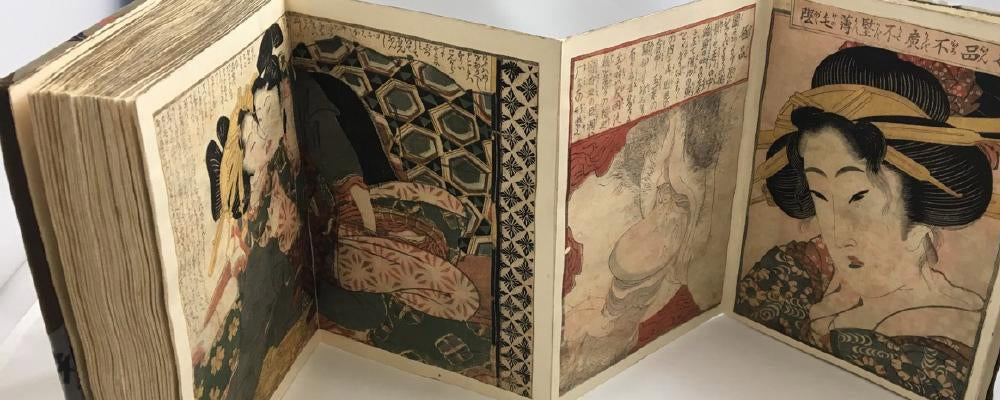
Woodblock Print Backing
Share
In this article, we will discuss the various types of backing that we see on many old woodblock prints.
First, Let's think about the Edo print buyer of the 1800's. He or she is out in the town and comes across a stand or shop selling prints. There is a print by an artist that they like it could be a beautiful portrait, scene from a play or a landscape, historical event or whatever. So the customer purchases the print for about the price of a bowl of noodles. Then they bring it home to share and admire.
So then what happens to the print: Perhaps they throw it in drawer bundled with other prints. Perhaps they glue it to a folding screen or sliding door as a decoration. And it seems that many print buyers, glued the prints into albums so they could be easily stored, and viewed. And these are many of the lower cost prints we find on the market today. I say lower cost because gluing prints to any surface reduces their value in the eyes of todays collector.

The common albums that the prints were glued into, were either made of paper folded accordion style with thick cardboard covers. or the albums were more like a book style with the pages sewn together with thread. In most of these cases, the prints had to be glued to a paper backing in order to strengthen them and bind them together in the album.

If the margins of the print were too wide, then the margins would be cut off. Here is the same print by Kunichika one with the full margins showing the publisher information and one that's been trimmed at the edges. Many times the albums were small so the prints were folded in half to fit.

Here's another example of 2 of the same prints by Kunisada, you can see that the one on the left hasn't been backed but the one on the right has. Quite a difference right? For the modern print collector, the most valuable prints are the ones that were not trimmed or backed.

It's important for a collector to see the back of the print, to feel the thickness and texture of the paper, to see how heavily the ink was applied, what colors bled through to the back, the marks left by the baren as it pressed the paper onto the ink, the imprints of the embossing, and all the subtitles of the interaction between paper, ink the woodblock and the printer. Understandably, you put glue and paper between that experience and the collector and you have a print of lesser value. On the converse, it allows a collector to purchase a world famous print for not the cost of a bowl of noodles but for a few hundred dollars instead of twice or three times that much.
Here are some samples from my collection to show you the types of backing I've seen.
The backing on this print (below) was used as writing paper for someone.

This interesting print is by Hirokage but unfortunately, someone firmly glued it to a piece of cardboard.

Here's a Hiroshige print that someone glued to a piece of wood.

With great care, it is possible to remove some prints from their backing, I have a YouTube video on removing the backings from my Kyoka Tokaido collection - you can view it here.
This is a video version of the print backing article you can watch on our YouTube channel.
Happy Collecting!